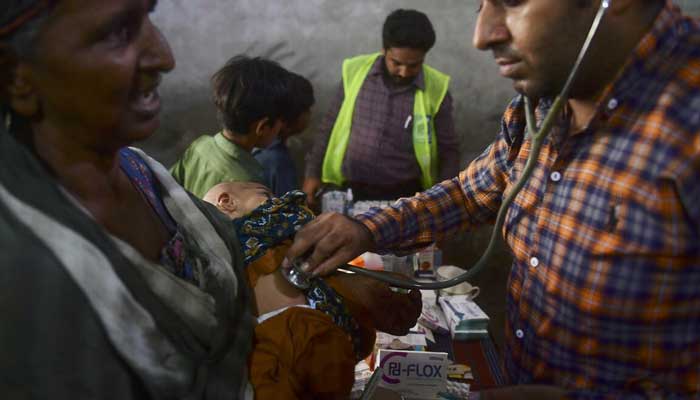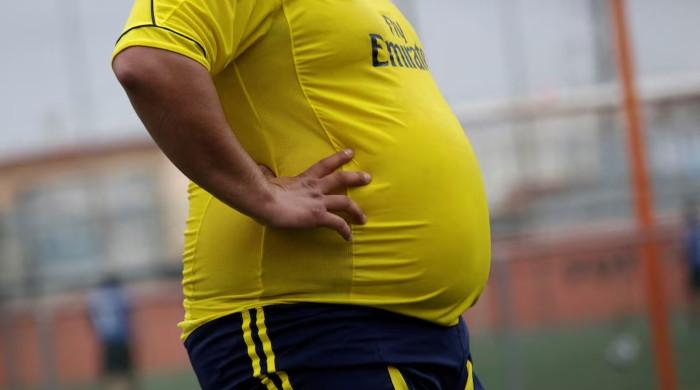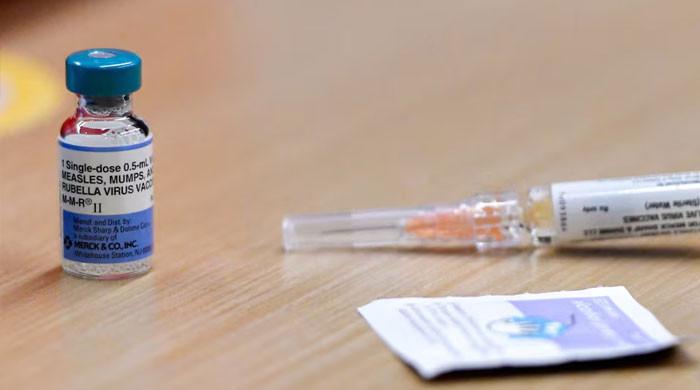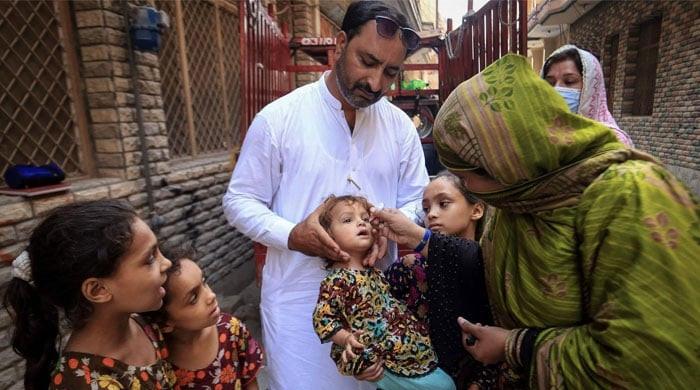Waterborne infections grip flood-ravaged areas
Diarrhoea, gastroenteritis, typhoid and dysentery second most common diseases among floods affectees, say health officials
September 04, 2022

- 14,869 cases of waterborne diseases and 13,326 cases of respiratory illnesses were treated on Friday at medical camps in Sindh.
- Many flood victims, including women and children, are complaining of psychological distress after losing their homes, loved ones.
- Diarrhoea, gastroenteritis, typhoid and dysentery are the second most common diseases among floods affectees.
KARACHI: Following the unprecedented deadly floods triggered by monsoon rains more than 500% above average levels, the affected people are now facing outbreaks of diarrhoea, dengue, skin diseases and other waterborne infections across the country, say health officials.
Many flood victims, including women and children, are complaining of psychological distress after losing their homes, loved ones and livelihoods, the officials added.
Public and private health officials said diarrhoea, cholera and other waterborne diseases had started killing both adults and children in the flooded areas in different districts of Sindh, Balochistan and southern Punjab, while people had also started losing lives due to malaria, but no accurate figures were being provided by the health officials.
“As many as 17,242 people, including men, women and children, were treated for skin infections at 442 fixed and mobile camps in Sindh. Diarrhoea, gastroenteritis, typhoid and dysentery are the second most common diseases among floods affectees followed by respiratory infections. Around 14,869 cases of waterborne diseases and 13,326 cases of respiratory illnesses were treated on Friday at 442 medical camps, established by the Sindh health department,” an official of the Directorate General of Health Sindh told The News.
'Five million people displaced'
Health experts and officials initially believed that around five million of the 33 million people displaced due to rains and floods in the country could get sick because of waterborne and vector-borne diseases. But doctors and paramedics on the ground say the situation is far worse as there are no sanitation facilities and no clean drinking water, and environmental conditions are making people sick at a rapid pace.
Malaria is the most common vector-borne illness in the flood-affected areas where daily thousands of patients are being reported with the deadly fever, the provincial health official said, adding that around 4,588 patients of suspected malaria had been treated in the medical camps by the provincial government throughout the province.
“But cases of dengue fever are also on rise in the flood- affected areas as well as in the cities where there is no flood at all. People are desperately looking for mosquito nets and mosquito repellent lotions, but we are unable to meet the demand,” the health department official added.
Cholera is also merging as a major public health emergency in the flooded areas of Sindh and Balochistan as around 450 lab confirmed cases of cholera have so far been reported from Sindh alone, officials, said adding that dozens of suspected cholera cases were also being reported from flood-affected areas of Balochistan as well as from affected areas of South Punjab and bordering regions of the provinces.
Dog and snake-bite incidents on the rise
Dog-bite and snake-bite incidents are also on the rise in the affected areas, they said and added that the anti-rabies vaccine and anti-snake sera were the most important vaccines required in the affected areas.
“And there are hundreds of people who are coming up with various other diseases. Women have gynaecological issues, thousands of women are pregnant and have to deliver babies within a next few weeks. There are patients of chronic diseases like diabetes and hypertension as well as cardiovascular disease. This is becoming an unmanageable task,” said a health official.
Sindh's 122 healthcare facilities destroyed
Around 122 health facilities, including tertiary-care hospitals, have been destroyed complete in Sindh alone while 950 health facilities are unable to be used at the moment due to partial damage during the rains and floods, the Sindh health department said, adding that most of the health facilities were ruined in Tharparkar, Umerkot, Larkana, Dadu, Shikarpur, Johi as well as in the suburbs of Karachi.
Almost the same is the situation at the medical camps established by different welfare organisations, where diarrhea is the leading cause of sickness among men, women and children, followed by skins infections, respiratory infections, vector-borne diseases including malaria and dengue. “Waterborne diseases, including acute watery diarrhoea, is the leading sickness among flood affectees. There are cases of typhoid, gastroenteritis and even hepatitis among flood affectees. There are also cases of chronic illnesses, including hypertension and diabetes, but they are unable to get the required treatment and medicines at the medical camps,” Dr Saqi Ansari, director medical services of the Al-Khidmat Foundation said.
'Pregnant women in dire need of medical attention'
Gynaecologists said women especially pregnant women were in dire need of medical attention in flood-affected areas, but their health needs were being ignored by the government and welfare organisations. They urged the lady doctors, lady health workers and nurses to volunteer for women in need of medical attention.
“Flood-affected areas, especially Tharparkar and Umerkot, were already facing an acute shortage of female health experts, but following floods and rains, the situation has become unimaginable for the women and pregnant ladies. The government and welfare organisations should arrange delivery kits, necessary medicines and supplies for women in need of medical attention,” Dr Sadia Ahsan Pal, member of the National Committee for Maternal and Neonatal Health, said.











